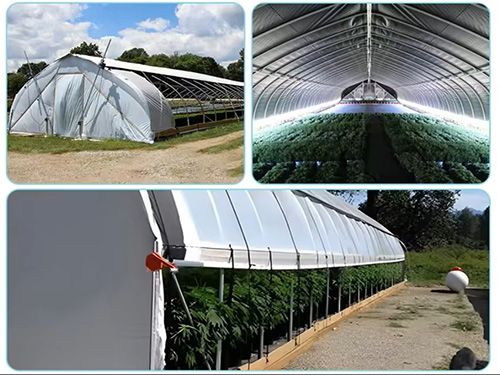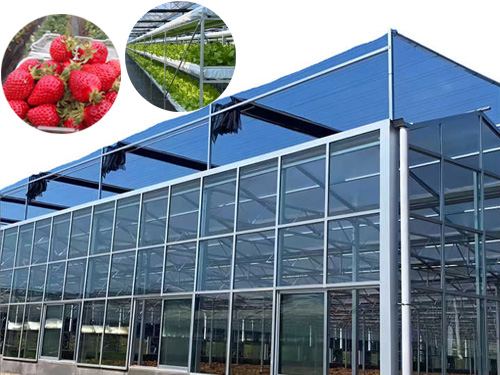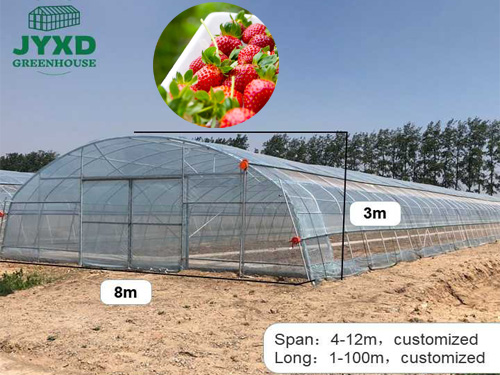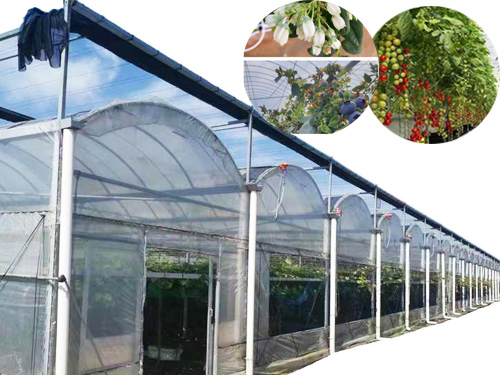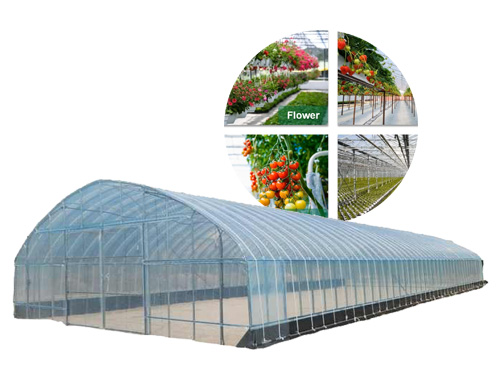NEWS DETAILS
NEWS INFORMATION
Greenhouse Pest Identification: Effective Use of Traps & Pheromone Lures in Protected Crops
AUTHOR:jyxd-greenhouse DATE:2025-03-31 14:51:12 HITS:150
Greenhouses provide an ideal environment for plant growth, but they can also become a haven for pests. Identifying and managing these pests is crucial to protecting your crops and ensuring healthy yields. One of the most effective methods for pest control in greenhouses is the use of traps and pheromone lures. This article explores how to identify common greenhouse pests and implement traps and pheromone lures for effective pest management.
Why Pest Identification and Control Matter in Greenhouses
Pests can cause significant damage to greenhouse crops, leading to reduced yields, increased costs, and potential crop loss. Early identification and control are essential to prevent infestations from spreading. Traps and pheromone lures offer a targeted, environmentally friendly solution for monitoring and managing pests in protected crops.
1. Common Greenhouse Pests and Their Identification
Understanding the types of pests that commonly infest greenhouses is the first step in effective pest management. Here are some of the most common greenhouse pests:
Aphids:
· Appearance: Small, soft-bodied insects, usually green or black.
· Damage: Suck sap from plants, causing stunted growth and transmitting viruses.
· Identification: Look for clusters on new growth or undersides of leaves.
Whiteflies:
· Appearance: Tiny, white, moth-like insects.
· Damage: Feed on plant sap, leading to yellowing leaves and reduced vigor.
· Identification: Shake plants gently; whiteflies will fly up in a cloud.
Thrips:
· Appearance: Small, slender insects, often yellow or brown.
· Damage: Scrape plant surfaces, causing silvery streaks and deformed growth.
· Identification: Check for tiny black specks (excrement) on leaves.
Spider Mites:
· Appearance: Tiny, red or brown mites.
· Damage: Feed on plant cells, causing stippling and webbing on leaves.
· Identification: Use a magnifying glass to spot mites and their webs.
Fungus Gnats:
· Appearance: Small, black flies with long legs.
· Damage: Larvae feed on plant roots, causing wilting and poor growth.
· Identification: Look for adults flying around plants and larvae in the soil.
2. Using Traps for Pest Monitoring and Control
Traps are an effective tool for both monitoring and controlling greenhouse pests. They help identify pest presence, assess population levels, and reduce pest numbers.
Types of Traps:
· Sticky Traps: Brightly colored (yellow or blue) cards coated with a sticky substance to attract and trap flying insects like whiteflies, thrips, and fungus gnats.
· Pheromone Traps: Use synthetic pheromones to lure specific pests, such as moths or beetles, into a trap.
· Light Traps: Attract nocturnal pests like moths with UV light.
Placement Tips:
· Position traps at plant height for maximum effectiveness.
· Space traps evenly throughout the greenhouse to ensure comprehensive coverage.
· Replace traps regularly to maintain their efficiency.
3. Leveraging Pheromone Lures for Targeted Pest Control
Pheromone lures are synthetic versions of the chemicals insects use to communicate. They are highly effective for attracting and trapping specific pests, making them a valuable tool in integrated pest management (IPM).
Benefits of Pheromone Lures:
· Targeted Action: Attract only the intended pest species, reducing harm to beneficial insects.
· Early Detection: Help identify pest presence before visible damage occurs.
· Population Control: Disrupt mating cycles by trapping male insects, reducing reproduction rates.
Common Pheromone Lures:
· Whitefly Lures: Attract and trap adult whiteflies.
· Thrips Lures: Target thrips populations effectively.
· Moth Lures: Control pests like tomato pinworms or cabbage loopers.
Usage Tips:
· Pair pheromone lures with appropriate traps for maximum effectiveness.
· Replace lures according to the manufacturer’s recommendations to maintain potency.
· Combine with other IPM strategies for comprehensive pest control.
4. Integrating Traps and Pheromone Lures into IPM
Traps and pheromone lures are most effective when used as part of an integrated pest management (IPM) strategy. Here’s how to incorporate them into your pest control plan:
· Monitor Regularly: Use traps to track pest populations and identify infestations early.
· Identify Pests Accurately: Properly identify pests to choose the right traps and lures.
· Combine Methods: Use traps and lures alongside biological controls (e.g., beneficial insects), cultural practices (e.g., sanitation), and chemical controls if necessary.
· Analyze Data: Record trap catches to assess pest trends and adjust your strategy accordingly.
5. Benefits of Using Traps and Pheromone Lures
Implementing traps and pheromone lures in your greenhouse offers several advantages:
· Environmentally Friendly: Reduce the need for chemical pesticides, minimizing environmental impact.
· Cost-Effective: Lower pest control costs by targeting specific pests and reducing infestations.
· Improved Crop Health: Protect plants from damage, ensuring healthy growth and higher yields.
· Enhanced Precision: Monitor pest populations accurately and respond proactively.
6. Best Practices for Greenhouse Pest Management
To maximize the effectiveness of traps and pheromone lures, follow these best practices:
· Sanitation: Keep the greenhouse clean to eliminate pest breeding grounds.
· Inspection: Regularly inspect plants for signs of pests or damage.
· Rotation: Rotate crops to disrupt pest life cycles.
· Education: Train staff to identify pests and use traps and lures correctly.
Conclusion
Greenhouse pest identification and control are essential for maintaining healthy crops and maximizing yields. Traps and pheromone lures provide a targeted, environmentally friendly solution for monitoring and managing pests in protected crops. By integrating these tools into a comprehensive IPM strategy, growers can effectively protect their plants and ensure successful cultivation.
For more expert tips and high-quality pest control products, visit our website and take your greenhouse management to the next level. Let’s grow smarter and cultivate a greener future together!
![]()
Meta Description: Learn how to identify common greenhouse pests and use traps and pheromone lures for effective pest control. Discover best practices for protecting your crops in a protected environment.
Hebei Juyou Xinda Greenhouse Facilities Co.,Ltd.
Copyright © 2024-2025 https://www.jyxd-greenhouse.com. All Rights Reserved Hebei Juyou Xinda Greenhouse Facilities Co.,Ltd.Copyright





 Current Location:
Current Location:


